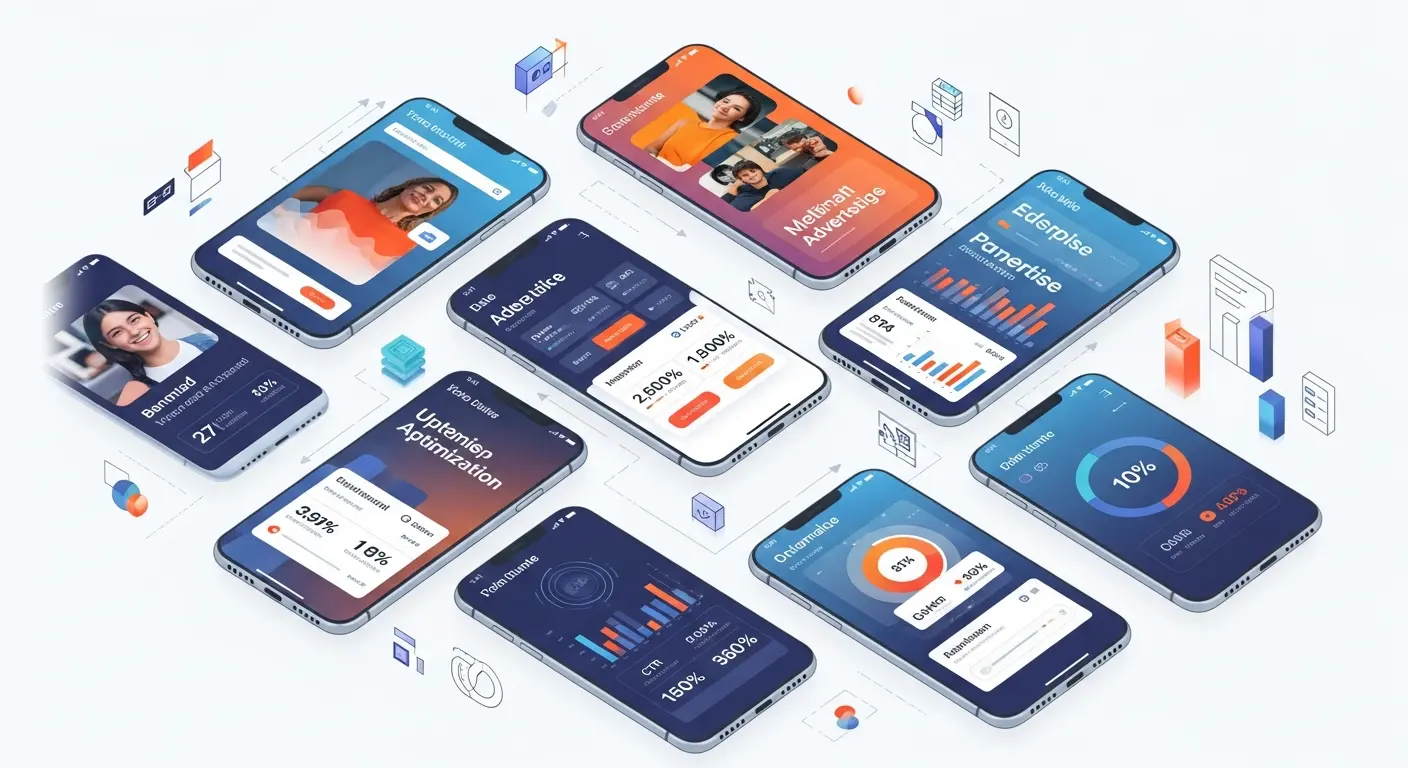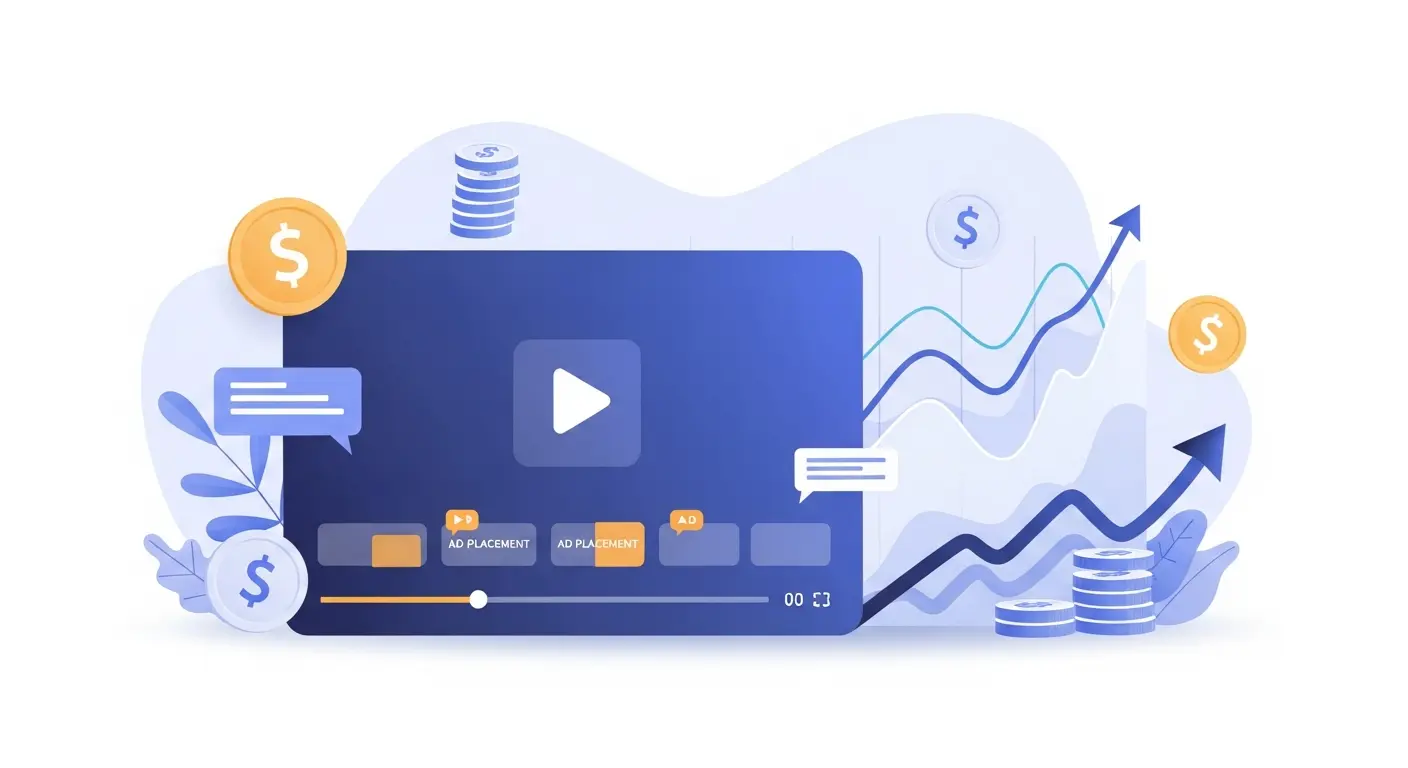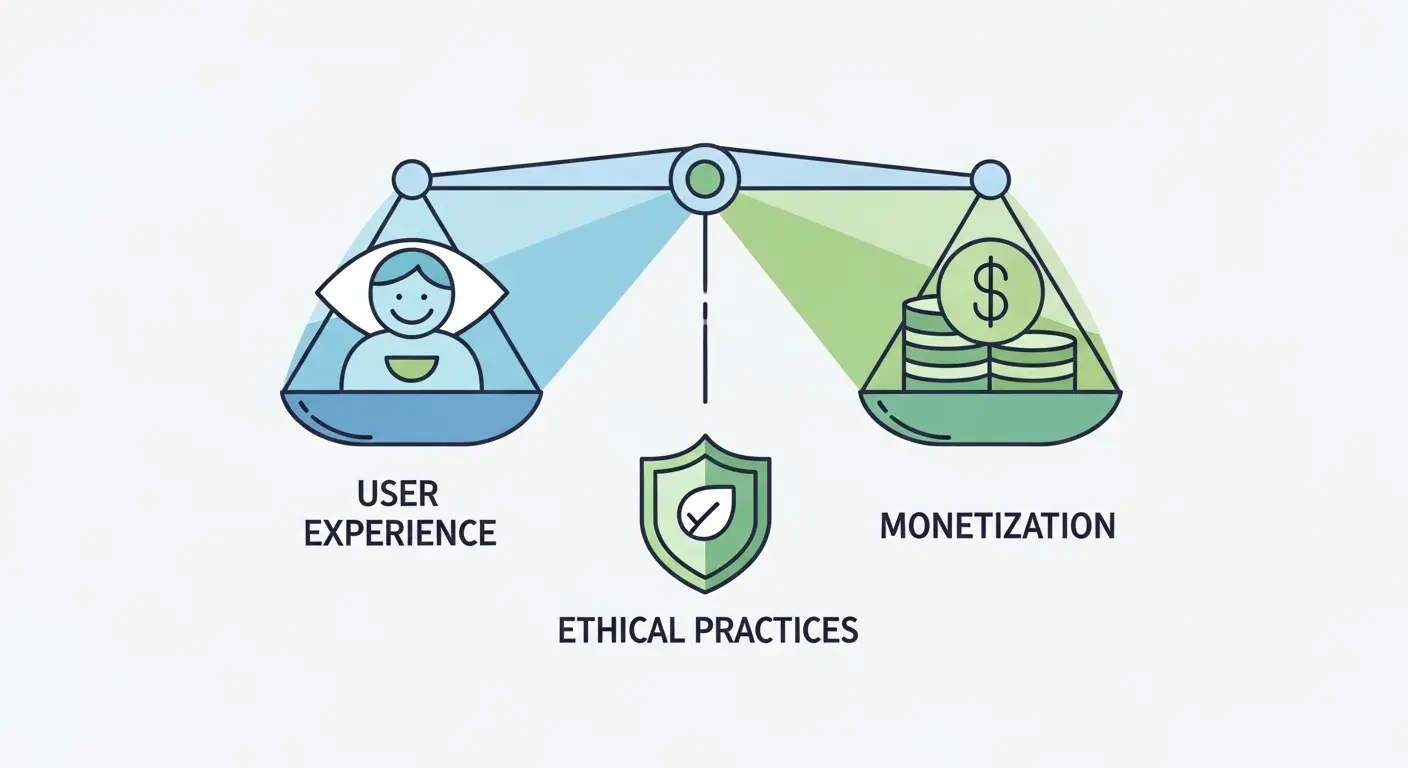Mobile Advertising Optimization: Maximizing Revenue on Small Screens
The digital landscape has tilted, and it’s leaning heavily towards the palm of our hands. Mobile devices are no longer a secondary channel for content consumption; they are the primary one. With over 60% of all web traffic originating from smartphones and tablets, publishers who fail to adapt their monetization strategies for smaller screens are leaving a significant amount of revenue on the table. The "mobile revenue gap"—the disparity between mobile traffic share and mobile ad revenue share—is a real and pressing challenge. Closing this gap isn't about simply shrinking your desktop site; it's about a fundamental shift in mindset and technology.
This comprehensive guide will serve as your roadmap to mastering mobile advertising optimization. We will explore the critical pillars of a successful mobile monetization strategy, from foundational mobile-first principles and responsive ad units to advanced tactics like AMP implementation and sophisticated app monetization. Whether you're a news publisher, a niche blogger, or an app developer, the principles outlined here will help you transform your mobile traffic into a powerful and sustainable revenue stream.
The Mobile-First Imperative: Why Small Screens Demand a Big Strategy
For years, the industry standard was "responsive design," a practice focused on making a desktop website look acceptable on a mobile device. Today, that's not enough. The future—and the present—is "mobile-first," a strategy that involves designing the user experience and monetization stack for the smallest screen first and then scaling it up for larger devices.
This shift is driven by stark differences in user behavior. Mobile users are typically more goal-oriented, have shorter attention spans, and are far less tolerant of slow-loading pages or intrusive experiences. A clunky, ad-heavy site that takes more than three seconds to load will see bounce rates skyrocket, meaning users leave before your ads even have a chance to render, let alone be seen.
Key Industry Trends Underscoring the Mobile-First Approach:
- Dominant Traffic Source: As mentioned, mobile is the king of traffic. Ignoring it is like ignoring the majority of your audience.
- Google's Mobile-First Indexing: Google primarily uses the mobile version of a site's content for indexing and ranking. A poor mobile experience directly hurts your SEO, reducing the very traffic you aim to monetize.
- Growing Mobile Ad Spend: Advertisers are pouring billions into mobile channels. By providing a premium, optimized mobile ad inventory, you position yourself to capture a larger slice of this growing pie.
Adopting a mobile-first strategy means prioritizing speed, user experience (UX), and viewability above all else. Every element, from your content layout to your ad placements, must be considered through the lens of a user holding a smartphone.
Responsive Ad Units: The Foundation of Mobile Monetization
The most fundamental building block of a mobile ad strategy is the responsive ad unit. Unlike fixed-size ads (e.g., a 728x90 leaderboard) that can break page layouts and create a jarring user experience on mobile, responsive ad units automatically adapt their size to fit the screen and container they are placed in.
Technical Implementation Details:
For publishers using Google Ad Manager, implementing responsive ads is typically handled through the Google Publisher Tag (GPT) library. The core concept is "size mapping," where you define which ad sizes are eligible to serve based on the user's viewport (screen size).
A simplified GPT implementation might look something like this:
// Define a mapping for a responsive ad slot
var mapping = googletag.sizeMapping()
.addSize([0, 0], [300, 250]) // For viewports 0x0 and up (mobile)
.addSize([750, 200], [728, 90]) // For viewports 750x200 and up (desktop)
.build();
// Define the ad slot using the mapping
googletag.defineSlot('/1234567/my_ad_slot', [300, 250], 'div-gpt-ad-12345')
.defineSizeMapping(mapping)
.addService(googletag.pubads());
In this example, the ad slot will request a 300x250 ad on mobile screens but will request a 728x90 leaderboard on larger screens. This ensures the ad always fits the layout perfectly, maximizing both UX and demand from advertisers who bid on specific, standard sizes.
Best Practices for Mobile Ad Units:
- Embrace Standard IAB Sizes: While responsive, you should still rely on common mobile ad sizes like 320x50 (mobile banner), 320x100 (large mobile banner), and 300x250 (medium rectangle). These sizes have the highest advertiser demand.
- Leverage Sticky/Anchor Ads: These ads "stick" to the top or bottom of the screen as the user scrolls. They boast incredibly high viewability rates (often >90%), making them a high-earning unit. Crucial Caveat: To comply with Better Ads Standards, sticky ads must be easily dismissible by the user and should not take up more than 30% of the screen height.
- Use Interstitials Sparingly: Mobile interstitials are full-screen ads that appear between page loads or user actions. While they command high CPMs, they can be highly disruptive. Google penalizes sites that use them intrusively on page load. Use them strategically at natural content breaks.
- Integrate In-Content Ads: Placing a 300x250 unit within the body of an article feels natural and performs well, especially when placed "above the fold" (visible without scrolling) or after the first few paragraphs.
Supercharging Speed and Performance with AMP
In the world of mobile, speed is not just a feature; it's the entire foundation of the user experience. This is where Google's Accelerated Mobile Pages (AMP) project comes into play. AMP is an open-source HTML framework designed to create near-instantaneous mobile web pages.
How AMP Boosts Ad Revenue:
AMP achieves its speed by enforcing strict coding standards, limiting the use of custom JavaScript, and pre-loading content from the Google AMP Cache. This has a direct and positive impact on ad monetization:
- Faster Ad Loading: AMP uses its own ad component,
<amp-ad>, which ensures that ads load asynchronously and don't block the rendering of your primary content. Faster-loading ads mean more rendered impressions. - Improved Viewability: Because the entire page loads so quickly, ads are more likely to be in view and registered by measurement vendors. High viewability is a key metric that advertisers pay a premium for.
- Enhanced User Experience: A lightning-fast page reduces bounce rates, increases session duration, and leads to more pageviews per user—all of which create more opportunities to display ads.
Technical and Strategic Considerations for AMP:
Implementing AMP means maintaining a parallel, stripped-down version of your web pages. While this requires initial development effort, the performance gains can be substantial, especially for content-heavy sites like news publishers.
To maximize revenue, your AMP setup must be integrated with a modern ad stack. This includes using AMP-compatible ad networks and implementing solutions for header bidding specifically designed for the AMP environment (e.g., via Real-Time Config or RTC). This ensures you're still creating a competitive auction for your inventory, even within AMP's restricted framework.
Advanced Mobile Web Monetization Strategies
Once you have a solid foundation of mobile-first design and responsive ads, you can layer on more advanced strategies to truly maximize your yield.
1. Mobile Header Bidding: Header bidding has revolutionized desktop monetization by allowing multiple demand partners to bid on inventory simultaneously before a call is made to the ad server. This same principle is critical for mobile. A sophisticated header bidding solution helps combat Google's dominance and ensures you get the highest possible price for every impression. On mobile, where latency is a major concern, server-to-server (S2S) header bidding is often preferred, as it moves the auction from the user's browser to a faster cloud environment.
2. Engaging with Mobile Video Ads: Mobile video is one of the fastest-growing segments of digital advertising. Publishers can tap into these high-CPM budgets by implementing various video ads formats. Outstream video, which appears within text-based content and plays when in view, is particularly effective on mobile. Best practices include ensuring videos are muted by default (with user-initiated sound), optimized for vertical viewing, and kept short and engaging.
3. Strategic Ad Layout Optimization: The number of ads on a mobile page is a delicate balance. Too few, and you're leaving money on the table. Too many, and you'll alienate users with a cluttered, slow experience. A data-driven approach to ad layout optimization is essential. A/B test different ad placements, densities, and formats. Tools can help you analyze how changes to your layout impact core metrics like viewability, user engagement, and overall revenue per session.
4. Data-Driven Decision Making: You can't optimize what you don't measure. Dive deep into your analytics to understand your mobile audience. Segment your data by device type, browser, and connection speed. Are Android users behaving differently from iOS users? Does your site load too slowly on 3G networks? Answering these questions will reveal critical optimization opportunities. Our in-depth analytics guide can help you establish a robust measurement framework.
Beyond the Browser: Tapping into App Monetization
For many publishers, the mobile strategy extends beyond the web and into the world of native applications. If you have a dedicated mobile app, you unlock a new and highly engaged environment for monetization. While the core principles of user experience remain, the technology and strategies differ significantly.
Core App Monetization Models:
- In-App Advertising (IAA): The most common model, involving banner ads, interstitials, native ads, and rewarded video.
- In-App Purchases (IAP): Selling digital goods, content, or features directly within the app.
- Subscriptions: Offering recurring access to premium content or features.
- Hybrid Models: Combining two or more of the above models (e.g., a free, ad-supported tier and a premium, ad-free subscription tier).
Optimizing In-App Ad Revenue:
For publishers relying on in-app ads, maximizing yield is paramount. This is where ad mediation becomes an indispensable tool. A mediation platform is an SDK integrated into your app that acts as an auctioneer. It sends ad requests to multiple ad networks simultaneously and awards the impression to the highest bidder in real-time. This waterfall or bidding-based competition dramatically increases fill rates and average CPMs compared to relying on a single ad network.
Furthermore, a comprehensive app monetization strategy should lean heavily on formats that feel native to the app experience. Rewarded video, for instance, is a powerhouse format in gaming and utility apps, where users voluntarily watch an ad in exchange for an in-app reward. Native ads, which are designed to match the look and feel of the surrounding content, offer a less intrusive and more engaging alternative to traditional banner ads.
It's also crucial to stay ahead of evolving privacy standards. Regulations like GDPR and CCPA, along with platform changes like Apple's App Tracking Transparency (ATT) framework, have fundamentally changed how user data can be used for ad targeting. To learn more, read our guide on how privacy regulations are impacting publishers.
Common Mistakes to Avoid in Mobile Monetization:
- Ignoring Page Speed: This is the cardinal sin of mobile web. Every millisecond counts.
- Overloading with Ads: A high ad density can destroy the user experience and trigger ad blockers.
- Using Intrusive Formats: Pop-ups and auto-playing video with sound are quick ways to lose your audience.
- Desktop-First Mentality: Simply shrinking your desktop site is not a mobile strategy.
- Neglecting Measurement: Failing to A/B test and analyze mobile-specific data leads to stagnation.
Your Checklist for Mobile Revenue Maximization
Bringing it all together, a successful mobile advertising strategy is a holistic endeavor. It's an ongoing process of testing, learning, and refining. Here is a checklist to guide your efforts:
- Adopt a Mobile-First Design Philosophy: Design for the smallest screen first. Prioritize speed and a clean UX.
- Implement Responsive and High-Viewability Ad Units: Use flexible ad slots with size mapping and leverage high-performing formats like sticky anchors.
- Prioritize Loading Speed: Implement AMP if it’s a good fit for your content, or aggressively optimize your standard mobile site through image compression, code minification, and efficient ad loading.
- Leverage Advanced Ad Tech: Integrate a robust header bidding solution for mobile web and a powerful ad mediation platform for your app to maximize competition.
- Test, Measure, and Iterate: Constantly use analytics and A/B testing to optimize your ad layouts, formats, and partners.
- Explore the App Ecosystem: If you have a loyal audience, consider developing a native app to unlock new engagement and monetization opportunities.
Conclusion: Seize the Mobile Opportunity
The transition to a mobile-centric world is complete. For publishers, this is not a threat but a massive opportunity. The small screen holds the potential for significant revenue growth, provided you approach it with a dedicated, intelligent, and user-centric strategy. By combining a fast, mobile-first foundation with a sophisticated and diversified ad stack, you can close the mobile revenue gap and build a thriving, sustainable business on the devices your audience uses most.
The path to mobile optimization can seem complex, but you don't have to navigate it alone. If you're ready to unlock the full revenue potential of your mobile traffic, we're here to help. Feel free to contact our team for a personalized consultation, or book a demo to see our technology in action. To learn more about our full suite of publisher tools, we invite you to explore our solutions.



